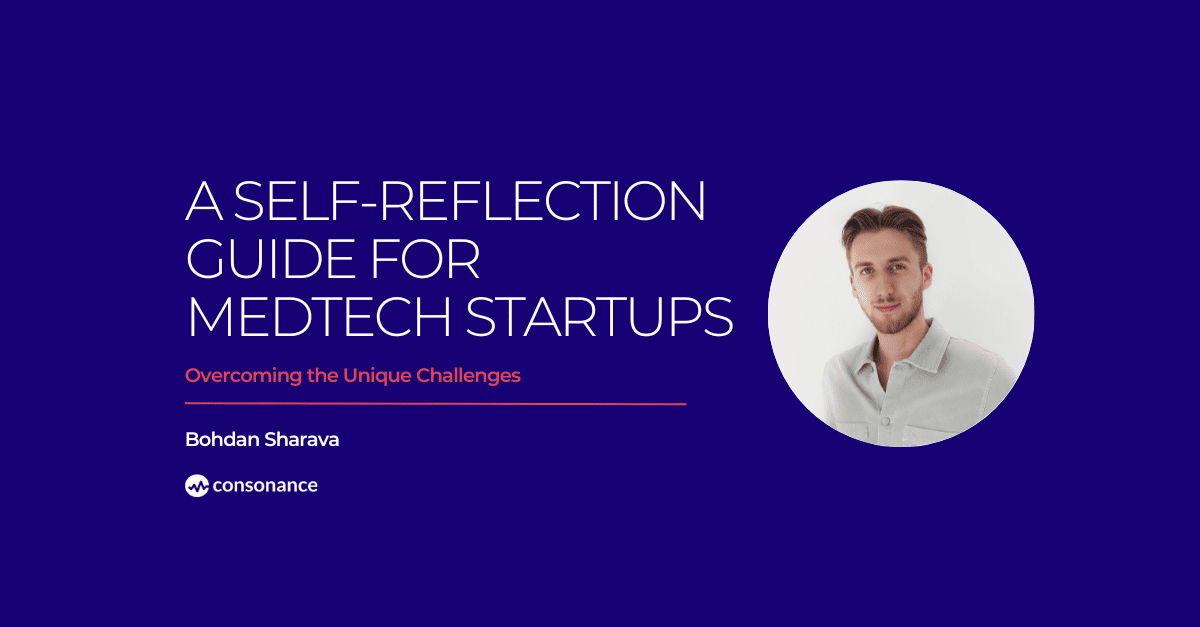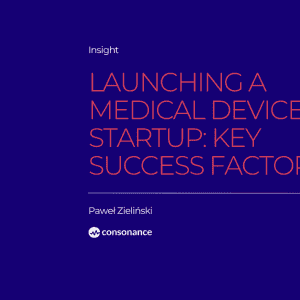A Self-Reflection Guide for MedTech Startups: Overcoming the Unique Challenges

Despite astonishing advances in medical treatment and substantial investments that have been made in healthcare innovation, MedTech Startups have one of the highest failure rates. To find out why, it is important to break down underlying challenges and examine the driving forces. How does the nature of product development in MedTech differ from other fields? What mindset and expertise are essential to navigate the uncertainty? What are the best questions to ask that can help MedTech startups reflect on their journey and improve themselves?
Why is innovation in MedTech startups so challenging?
To be clear, most startups are hard to build. However, starting a company in the medical technology field adds an extra layer of complexity to it. Let’s explore the challenges within three key areas.
Securing the funding
Innovation always presents two key financial challenges: funding the product development and figuring out who and how will pay for the product. In healthcare, the first challenge is caused by these two factors:
- Long investment time: The process of transforming a concept into a market-ready, clinically validated, and regulatory-approved medical device takes years. This prolonged timeline requires substantial funding from investors, who won’t witness the first commercial results for several years.
- Availability of smart capital: There is a scarcity of capital sources that are familiar with the regulatory and technological hurdles of the medical device sector (distinct from biotechnology and pharmaceuticals, which operate within different regulatory frameworks). Thus, it is difficult to find investors equipped with relevant experience who can provide helpful guidance to the innovator.
No matter how well you plan, it always will take longer and cost more than you think. Expect the worst, and aspire to the best.
Product development and certification
The product development process in MedTech differs from other fields. The key challenge originates from the need for a deep scientific understanding of a medical cause addressed with an advanced engineering solution, all while being regulatory compliant.
Unlike conventional engineering, building design and engineering of medical products requires in-depth knowledge of safety norms and standards, accompanied by rigorous testing in accredited laboratories, and integration of risk management and quality management systems (e.g., ISO 13485).
The essential part of the product certification strategy is the clinical evaluation needed to ensure the safety and efficacy of the device. Sometimes, this involves conducting clinical trials that provide the startup with a robust foundation of evidence. The need for recruiting, providing insurance, monitoring participants, and analyzing results are resource-intensive procedures that demand additional investments and extend the timeline.
Commercial strategy and execution
Once the product is certified, the journey doesn’t stop. Executing the commercial strategy often means challenging established systems and processes. This stage has lots of friction. Therefore, startups need to prepare beforehand by delving deeper into the complex system of healthcare payments and reimbursements.
After thorough research, startups often discover that decisions in this phase are not only made by consumers but by a third party represented by the government or private insurers, which must approve a new product or service, along with its pricing before they will pay.
The perception of a product’s value, which determines the level of reimbursement, may differ among doctors, patients, and insurers. Each party has its motivations and incentives. While one party seeks a better treatment or diagnostic procedure, the other party considers the healthcare system’s costs that the new device generates.
How to effectively navigate a MedTech startup project?

A MedTech project is a multifaceted journey that demands careful navigation through a complex intersection of technology, healthcare, and regulatory landscapes. When an innovation has the potential to transform patient care and outcomes, the question arises: What is the best way to navigate forward in a MedTech project? Read below to find a brief exploration as we unravel key strategies and insights, guiding innovators, entrepreneurs, and project leaders through the intricate path of successfully advancing MedTech initiatives.
Recognize the challenges.
Ask questions to gain a deeper understanding.
It is crucial to introspect and reflect on the critical aspects of MedTech startups journey. Here is the list of questions that can be helpful to start with:
- Does the medical device effectively address a critical healthcare problem?
- How can the medical device be integrated into clinical workflows, ensuring a user-friendly experience for both healthcare professionals and patients?
- Is the proposed medical solution technically feasible?
- Does the medical device have a viable market size?
- What is the current stage of scientific knowledge regarding the medical cause that the device is addressing?
- Which regulatory framework do we plan to comply with? For example, is it FDA, EU MDR, or both?
- What is the clear intended use and risk classification of the device?
- Which standards and norms are essential to comply with for successful certification of the device?
- Will clinical trials be required for clinical evaluation to demonstrate safety and effective performance?
- What is the strategy to navigate the reimbursement landscape?
Identify weaknesses and bring the relevant expertise to solve them.
Many startups may struggle to answer these questions due to a lack of specific expertise, such as regulatory, engineering, or medical knowledge. That’s why we strongly advocate conducting thorough research to answer critical questions before diving into engineering.
Otherwise, there’s a risk of a common innovation pitfall: creating a piece of technology and subsequently searching for a market and medical cause to address. In reality, it should happen the other way around.
In this ebook, we share our practical example of how to perform the initial state of knowledge analysis to understand the medical cause from a scientific perspective, technological feasibility, the regulatory landscape, and current market solutions.
Conclusion
The MedTech startups face a lot of challenges and extreme accountability in front of consumers who expect to have great-performing medical products, investors who await commercial results, regulators who require compliance with quality and safety standards, and reimbursement insurers who are looking for cost-effective solutions.
At Consonance, we understand the unique landscape and its challenges. With a hands-on mindset and a deep sense of mission, we do our best to help startups build innovative medical devices by assisting with design, R&D, manufacturing, and regulatory compliance.
Feel free to connect! We help to move MedTech startups ahead of the curve.






